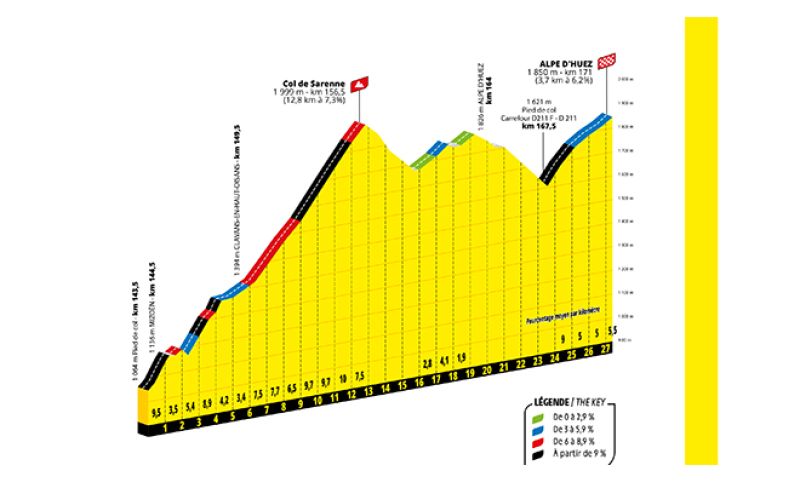

The dam at the junction with Les 2 Alpes is well-known to cycling enthusiasts, because it's located at the foot of the climb that saw Pantani's epic feat in the 1998 Tour de France. Wait a moment, though: with the same water view, descending from Lautaret, there's the turn towards Col de la Sarenne, tackled for the first and so far only time by the Grande Boucle in 2013, during Chris Froome's "domination".
A precedent that for Italians corresponds to Moreno Moser's memorable day, third in the then 18th stage starting from Gap and surprisingly won by Christophe Riblon. A route that transforms into a new stage between the capital of Hautes Alpes and the cycling sanctuary called Alpe d'Huez, although we're talking about the less noble side compared to the one with 21 hairpins starting at Le Bourg d'Oisans.
When satellite navigators were not yet widespread, this route was preferred by those wisely wanting to avoid long queues, reaching the destination following the example of French motorists. The Sarenne, proposed by the Tour on July 25th, with 12.8 km at 7.3 percent, will be a not-at-all-trivial follow-up to the previous day's stage between Gap and Alpe d'Huez, the one with the classic succession of "lacets" to tackle. Or to string out like a rosary, pardon the blasphemy.
Full of scenic suggestion starting from the small and enchanting flowering village of Mizoën and up to the panoramic pastures before the heliport, the climb had also been tackled during the 2017 Critérium du Dauphiné, won - needless to say - by Froome. Now Sarenne is fully ennobled, the stage set to definitively sculpt the 2026 Tour classification, especially because before this, the Croix de Fer, Telegraphe, and Galibier will be faced. Talking about Sarenne as the back side of Alpe d'Huez is simply reductive...

Se sei giá nostro utente esegui il login altrimenti registrati.